Italy, like Greece, is a land full of legend, myths and history. Today, these stories are recounted through its most beautiful archaeological sites.
Whether it is the Greek, Roman or Ottoman period, Italy has always been placed in the centre of history. A story full of legends and dramas, which has been revealed to us since the 17th century and the first archaeological discoveries.
Since then, the searches have never stopped and continue to fascinate us all. From the gladiator battles in the centre of the Colosseum of Rome to the ensevelia city of Pompeii, each archaeological site allows us to better understand the history of civilization.
This is why Wanderlix offers you a guided tour of the 12 most important archaeological sites in Italy.
Places and cities
Pompeithe ruins of a tragic story
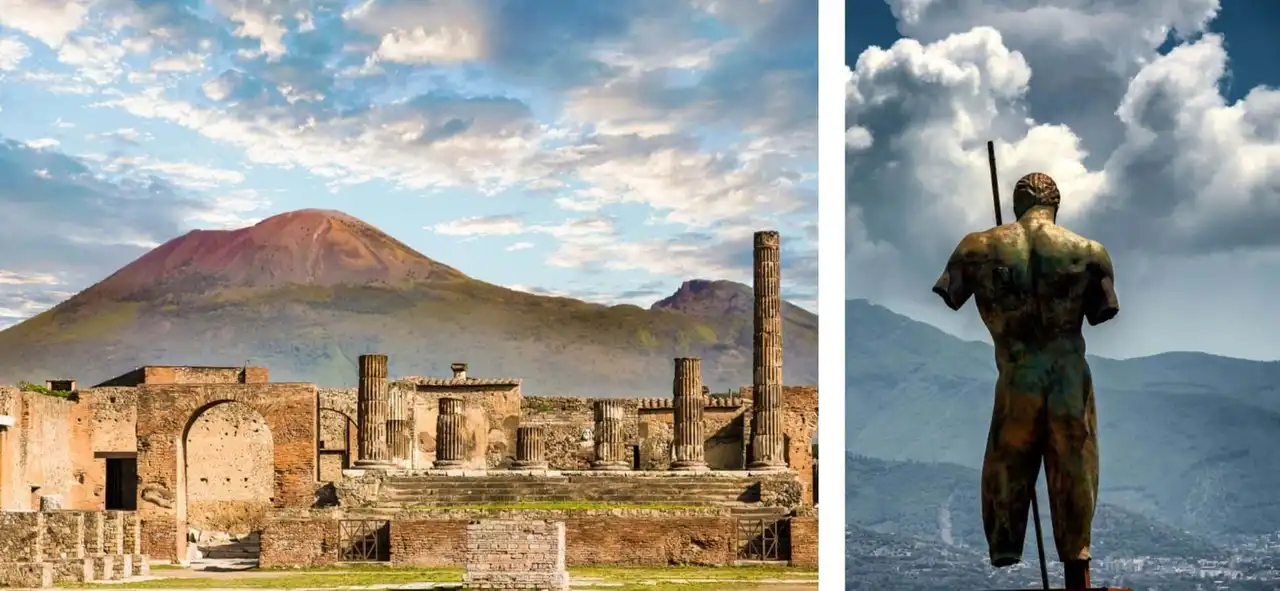
Ruins of the city of Pompeii, with view of the Vesuvius - Photo credit: Shutterstock – Darryl Brooks ' Karl Allen Lugmayer
Conservation condition: ★★★★★
Public knowledge: ★★★★★
Historical influence: ★★★★
How not to start this journey in the footsteps of History by the most famous archaeological city in the world: Pompeii? Ensevelie by the Vesuvius in 79 Ap J-C, Pompéi is today the only arhceological site in Italy to have a complete vision of the ancient Roman cities.
Inscribed to the Unesco World Heritage Site, Pompéi unveils houses with sometimes intact wall decoration, aisles of commercial buildings and paved streets linking the entire city in total harmony.
The (re)discovery of this city in the 17th century has since improved world archaeological practices, historical understanding of Roman civilizations and knowledge of ancient art. All these reasons make Pompéi the most influential archaeological site of Roman history, which you must not miss.
Herculanum, the other buried
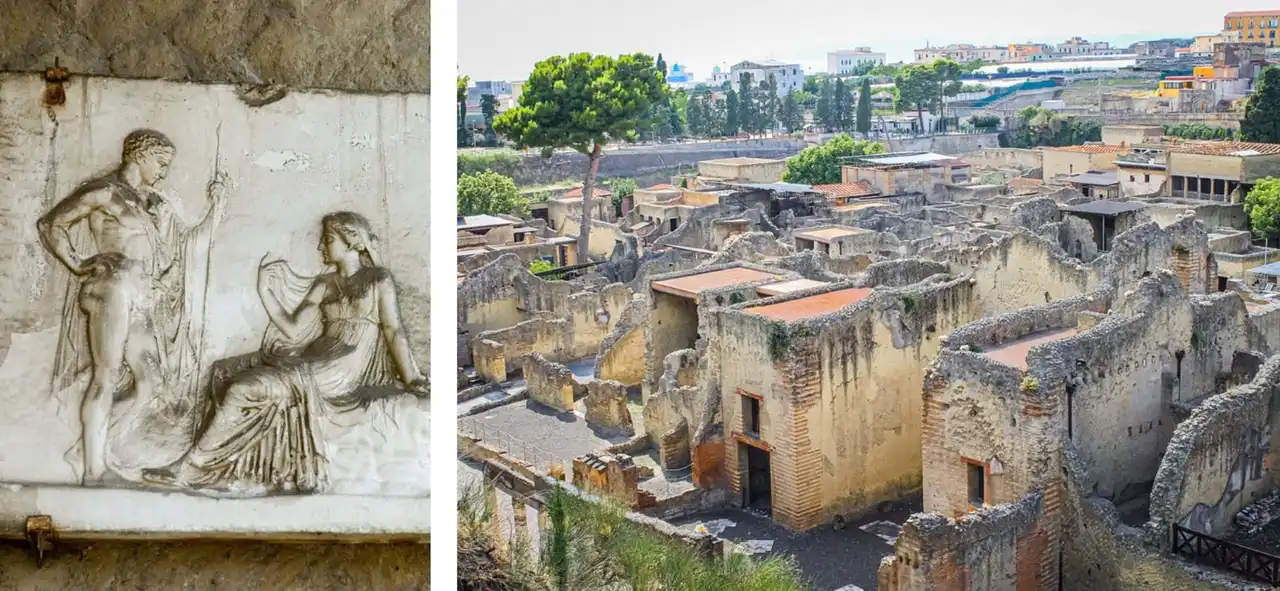
Fresque and ruins of Herculanum - Photo credit: Shutterstock – Pierrette Guertin & Abrilla
Conservation condition: ★★★★★
Public knowledge: ★★★
Historical influence : ★★★★
Herculanum, less known than her "great sister" Pompeii, is the other city buried by the sadly famous eruption of the Vesuvius in 79. Smaller than Pompeii, and above all more unknown, Herculanum nevertheless offers an equally impressive archaeological site.
Once on site, you can discover the port area, in which more than 300 human skeletons have been discovered. You will also find the Sacellum of the Augustals, as well as the houses of Neptune and Empitrite, and enjoy them to admire their sublime mosaics, particularly well preserved.
To visit this archaeological site of Italy, you will have to plan about two hours. We advise you to be accompanied by a guide, which will make you travel in time, through his stories.
The Forum Romain, the heart of history
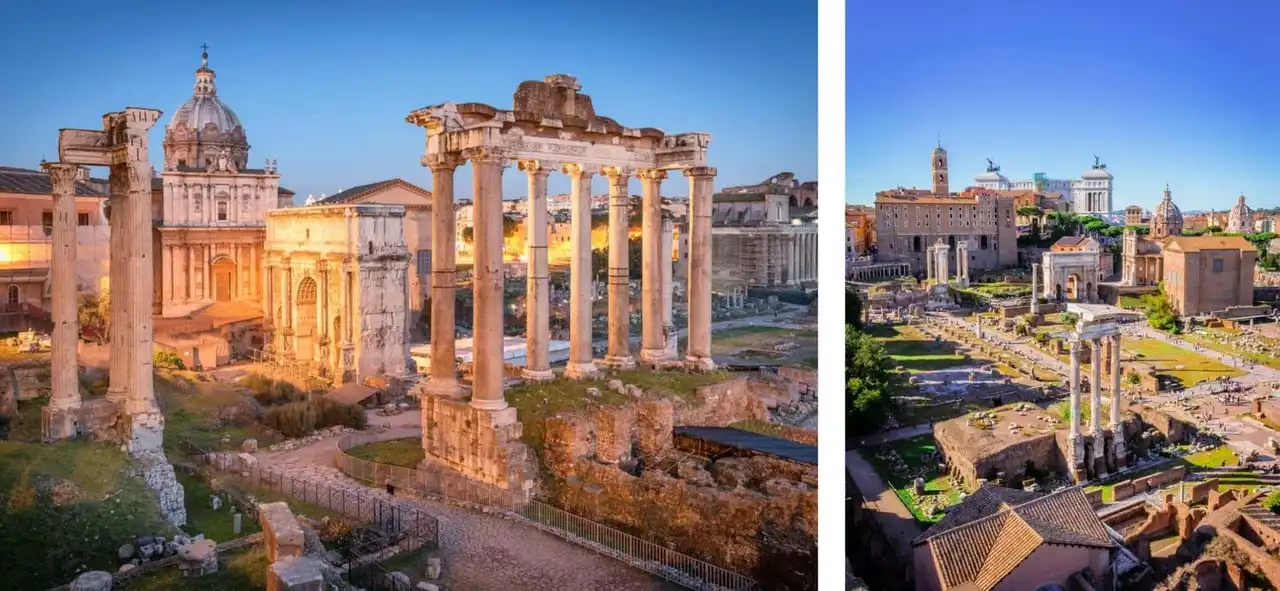
The Roman Forum, ancient vestiges in the heart of Rome - Photo credit: Shutterstock – tichr ' Ava Peattie
Conservation condition: ★★★
Public knowledge: ★★★★
Historical influence: ★★★★
By visiting the Roman Forum, you will be at the heart of history. Installed on a dry and dry marshy area for its construction, the Roman Forum quickly becomes the main square of the Antique Rome. Religious ceremonies, games, gladiator battles and political proclamations are organized until the fall of the Roman Empire during the fifth century.
On site you will discover the temples del Divo Giulio (the temple of Caesar), Saturn and Dioscures, just like the columns of Phocas, or the Basilica of Æmilia. All these discoveries have enabled us to refine our vision of life in Rome, at the height of Antiquity.
This Italian archaeological site, also known as the " cow fields" because it served as pasture in the Middle Ages, is the archaeologist's landmark since the 18th century.
Theatres and Arenas
The inexhaustible Colosseum of Rome
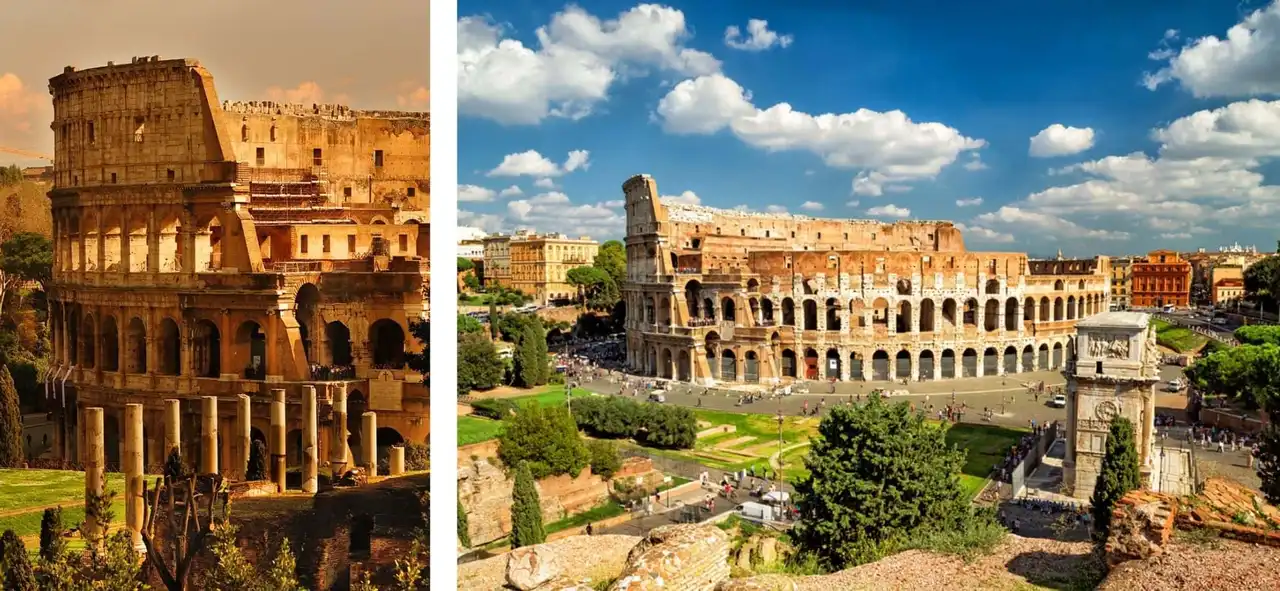
Colosseum of Rome - Photo credit: Shutterstock – JPF & Viacheslav Lopatin
Conservation condition: ★★★★
Public knowledge: ★★★★★
Historical influence: ★★★★
The Colosseum Rome is, with Pompeii, the most famous historic site in Italy. An ovoid amphitheatre built between 71 and 80 AD, it is a real legend in the collective imagination. Until the end of the sixth century, he was the witness of Roman extravagance (and cruelty).
More than 50,000 people rushed to admire the battles of wild animals, the battles of gladiators, the reconstructions of battles celebrating the glory of the Roman Empire, but also the executions of condemned to death.
By discovering the ruins of the Colosseum, you will discover history. A place that survived the earthquakes, the fall of the Roman Empire, and many more trials. Discover a unique architecture for the time, crowd the arena by imagining a gladiator facing the emperor, or immerse yourself in the singular atmosphere of the basement of the Colosseum, in which so many legends murmured eternally.
Theatre of Taormine
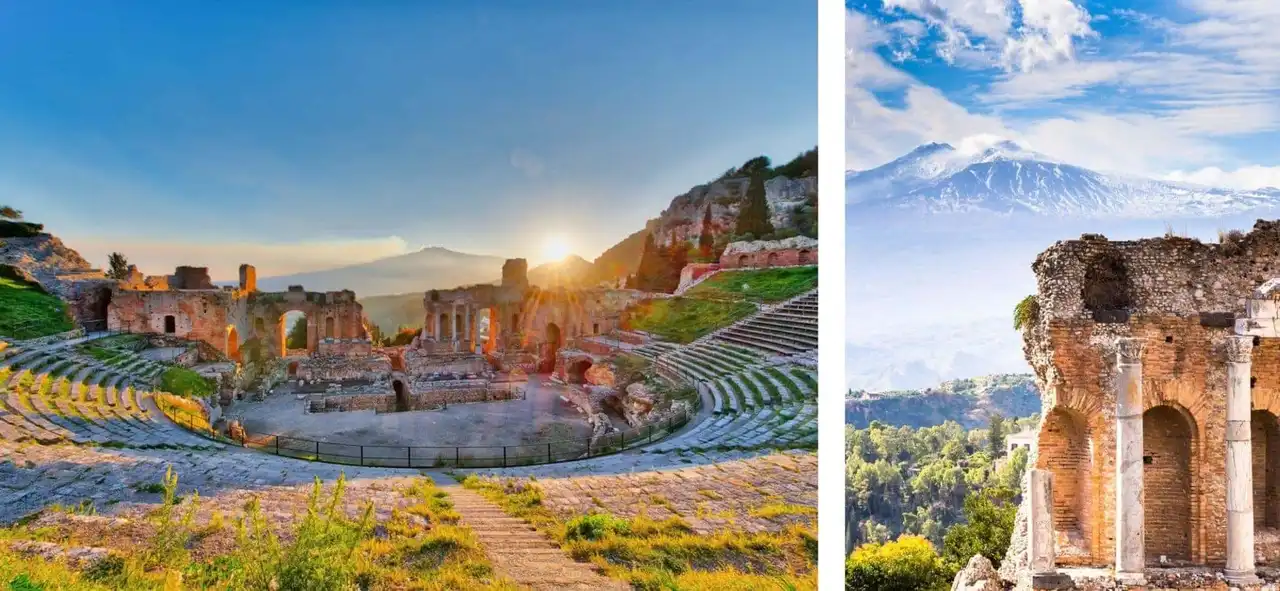
Taormine Theatre, view of the Etna - Photo credit: Shutterstock – michelangeloop & Raisa Suprun
Conservation condition: ★★★★
Public knowledge: ★★
Historical influence: ★★★
The Taormine Theatre is one of the oldest vestiges of the Greco-Roman era, but also the largest theatre in ancient Italy (with that of Syracuse). Dating from the third century BC, the latter is particularly well located: in the ancient Greek then Roman city of Tauromenion (now Taormine). On the side of a hill, it offers an extraordinary view of the Mediterranean and the Etna .
Its architecture, more from the Roman renovations than from the original construction carried out by the Greeks, is noticed by its grams arranged in a circle arc, facing the scene.
Arenas of Verona
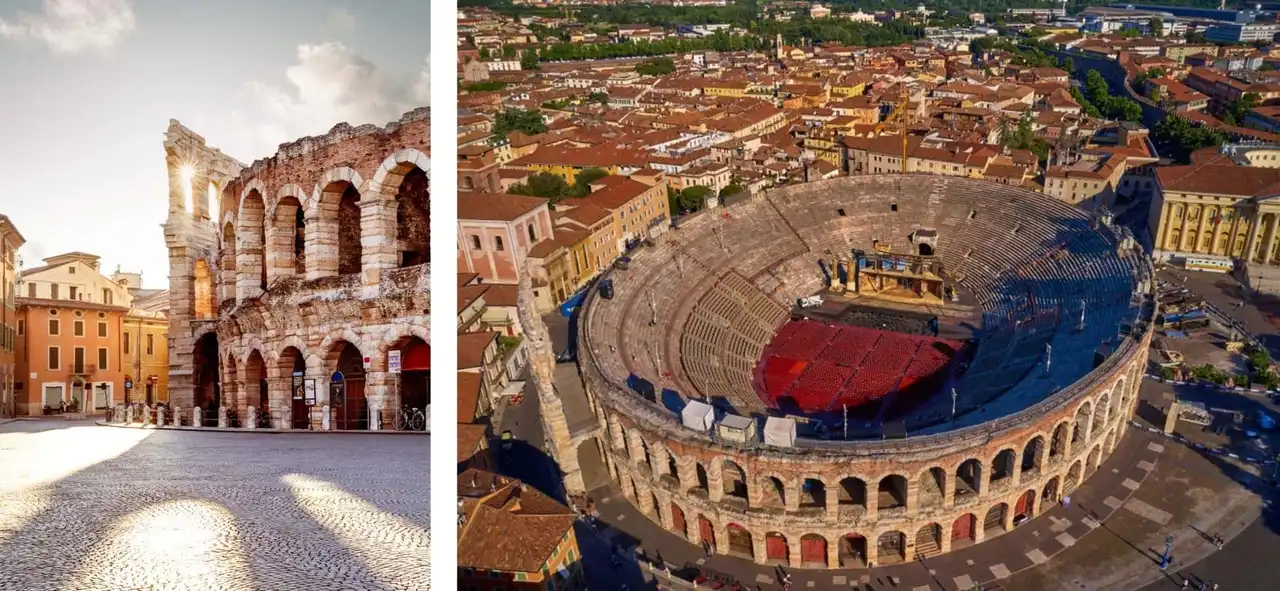
Verona Arenas and its 30,000 places - Photo credit: Shutterstock – mikolajn & Andrea Berg
Conservation condition: ★★★★
Public knowledge: ★★★
Historical influence: ★★★
With more than 2,000 years of history and representations, Verona's arenas is undoubtedly the most fascinating Italian archaeological site in the Veneto region. Built around the year 30 after J-C, they then served, like the Colosseum, to host spectacular performances, to entertain the people.
Destroyed in part during an earthquake in the early 12th century, it was French general Sextius Alexandre François de Miollis who organized the renovation during the course of the 12th century. First Empire .
Since then, the arenas have never ceased to host opera shows and especially gladiator battle reconstructions, which you can admire almost every evening from March to September. As a symbol, they will host the closing ceremony of the 2026 Winter Olympic Games.
The archaeological complexes
Neapolis National Park
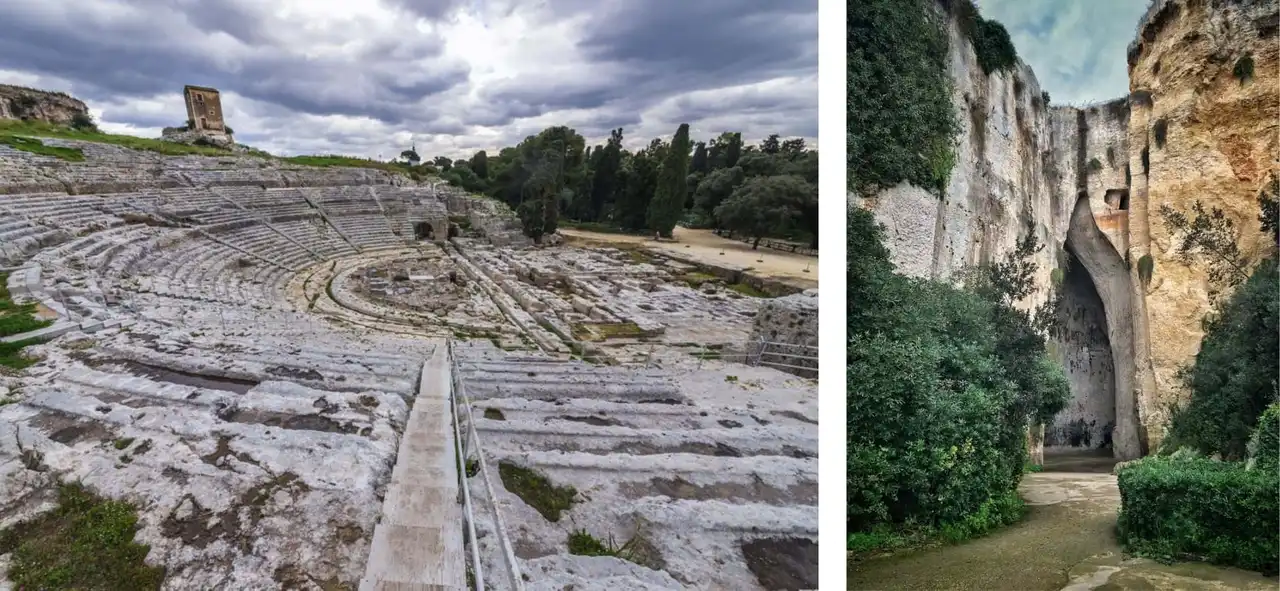
Ruins of a Greek theatre, and “Denys ear” in the Neapolis National Park - Photo credit: Shutterstock – Fotokon
Conservation condition: ★★★
Public knowledge: ★★
Historical influence: ★★★
Back to Sicily, in the Neapolis Archaeological Park! Here, a multitude of sites follow, dating from both the Greek and Roman times, with different conservation states. Greek theatre, Roman amphitheatre, altar of Hiéron II and Latomies follow each other, offering an opening on History as few archeological sites in Italy.
The most amazing thing is that the Greek theatre, built about 500 years before the Roman amphitheatre, is much better preserved. For this archaeological site, the presence of a guide will be able to point out your visit in order not to miss any details, and the mythological ferus will be told the story of “Denys’ ear”, the tyrant who came to listen to the conversations of the prisoners of these Latomies.
Paestum Archaeological Park
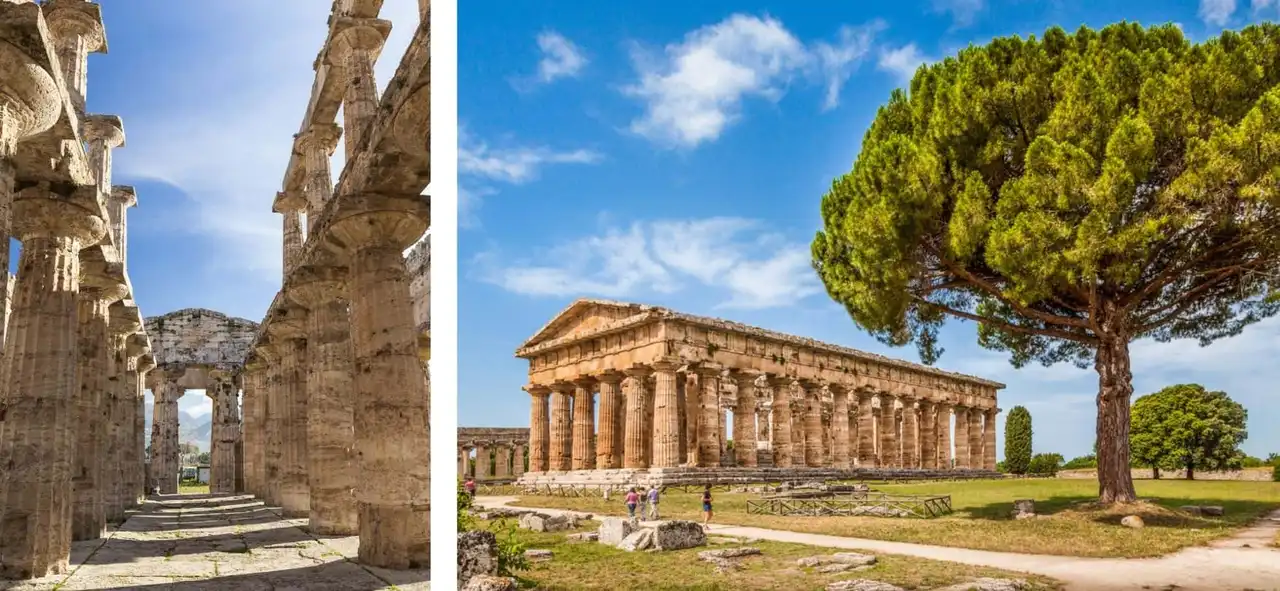
Temple of Hera and temple of Neptune, at the Paestum - Photo credit: Shutterstock – Stefano Buttafoco & canadastock
Conservation condition: ★★★★
Public knowledge: ★★
Historical influence : ★★
Originally a Greek colony founded in 600 BC, Paestum is now an archaeological park classified as the UNESCO World Heritage Site and located southeast of the Gulf of Salerno. Then named Poseidonia, the colony pays tribute to the Greek gods.
If his History becomes Roman in 273 BC, it is nevertheless the Greek temples that will mark your visit. Thus, thanks to the archaeological excavations carried out since the end of the 18th century, you can admire the excellent state of conservation of the temples of Poseidon, Ceres and Hera.
The valley of the temples, Agrigento
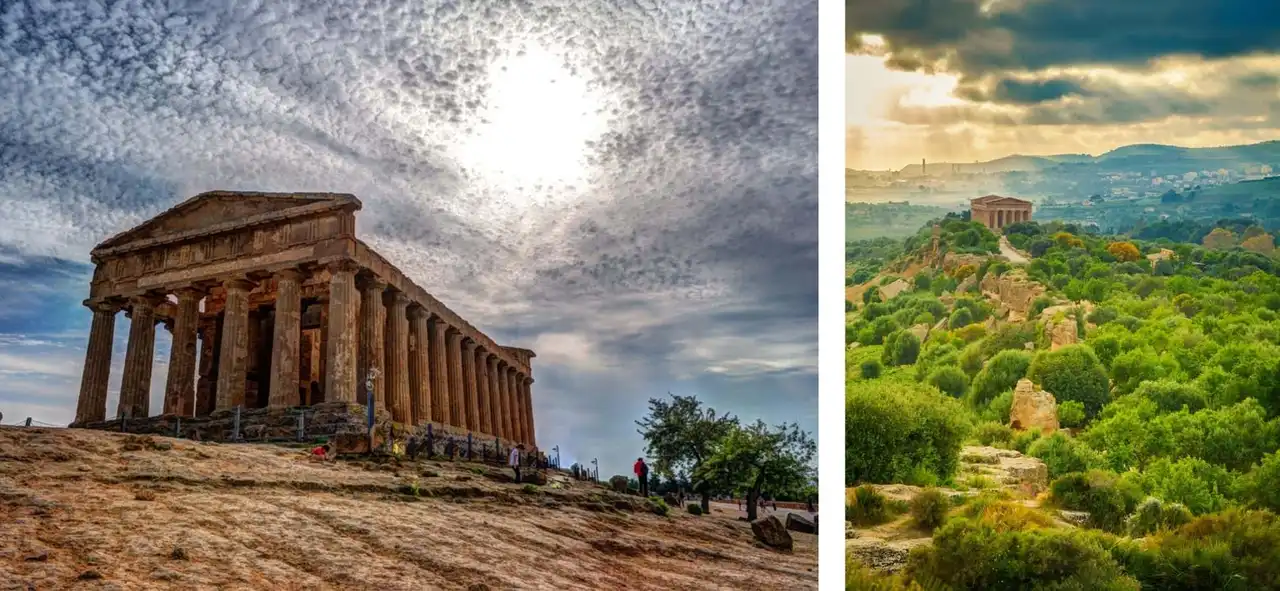
Valley of the temples, Agrigento - Photo credit: Shutterstock – Romas_Photo & Anna Lurye
Conservation condition: ★★★
Public knowledge: ★★★
Historical influence : ★★★★
Another Greek colony to visit absolutely during your archaeological journey in Italy is the famous Valley of the Temples, located in Agrigento en Sicily . The latter reveals the history of the Greek settlers, from Géla in 582 BC, to make the city then named Akragas one of the most prosperous Greek cities of history.
On these lands you will go to the discovery of a dozen temples, left to abandon after the expansion of the Romans. Besides these temples, you can discover Greek and Roman necropolises, as well as the tomb of Theron.
For the visit of this Italian archaeological site, we strongly advise you to be accompanied by a guide, which will carry you to the heart of History.
The Nuraghes Sardinia
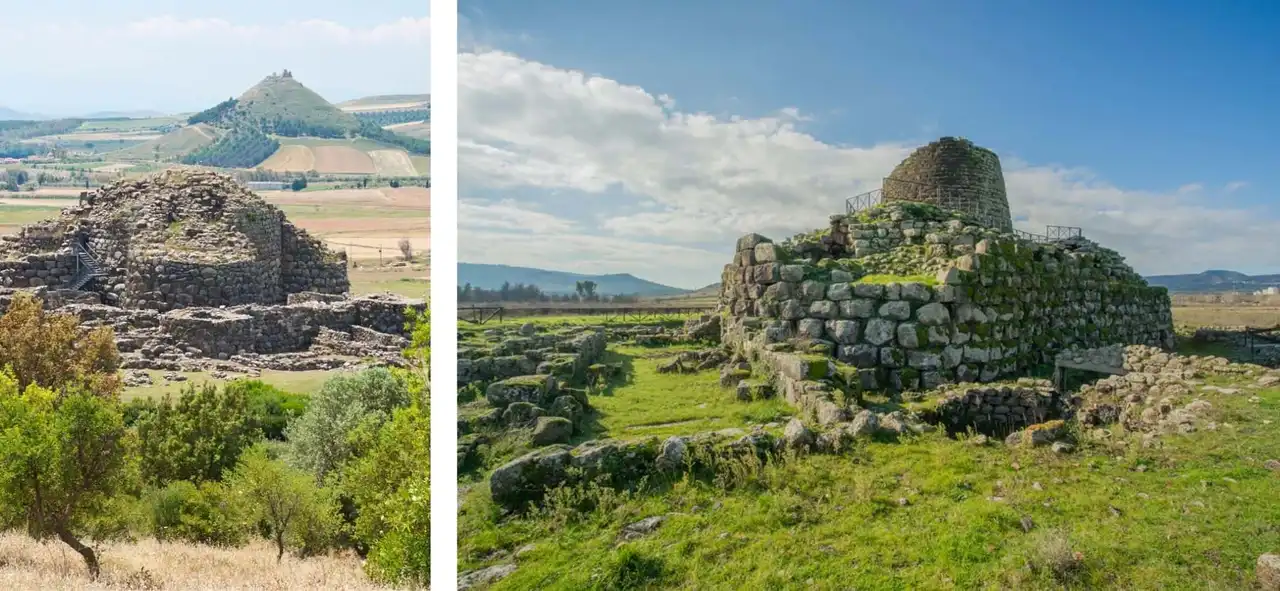
Nuraghe de Barumini, and Nuraghe de Santu Antine, Sardinia - Photo credit: Shutterstock – Emiliano Pane & fabiano caddeo
Conservation condition: ★★
Public knowledge: ★★★
Historical influence : ★★★★
To visit the Nuraghes of Sardinia, it is to leave for a long historical journey, whose secrets are not yet revealed. More than 8,000 round towers, in the shape of cones and dating from the 15th century BC are placed this and there over 200 kilometers.
This journey from Cagliari to Nuoro will reveal the way of life of this civilization Nuraghe, the people of shepherds and peasants. The usefulness of these towers has not yet been truly discovered, and it is estimated that they could be of military, religious or even astronomical origins.
One of the best known and preserved sites of these Nuraghes is that of Su Nuraxi located in Barumini. You can discover 7 towers, whose conservation status is impressive when you know they are about 17 centuries old...
Arc and Porte
The palatine door
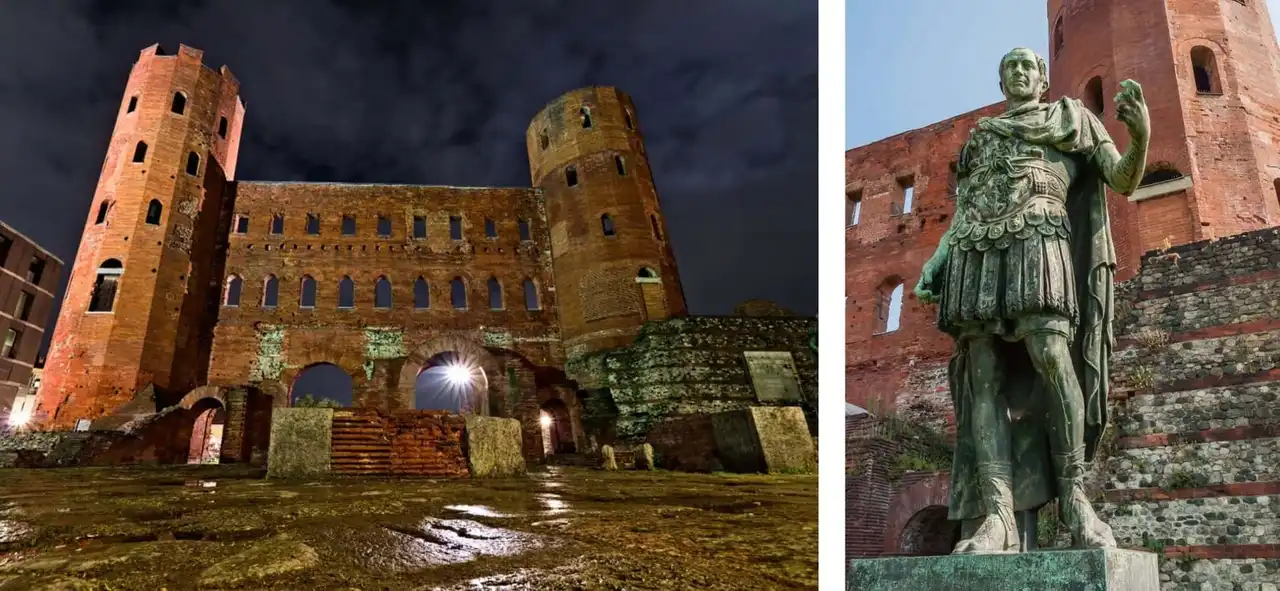
Palatine door and Roman statue in Turin - Photo credit: Shutterstock – Marco Fine & Fabio Mancino Photography
Conservation condition: ★★★★
Public knowledge: ★★★
Historical influence: ★
The Palatine Door is one of the 4 gates of the Roman city, with the Decimal Door, the Marble Door and the Pretorian Door. Yet, the latter is the only one still visible today.
To admire its two polygonal towers, of sixteen faces each, you will have to go to Turin . Built in the I-II century after J-C, these towers were then used as fortified houses. But in the 19th century, it was in prison that the Palatine Gate was used...
The Constant Arc
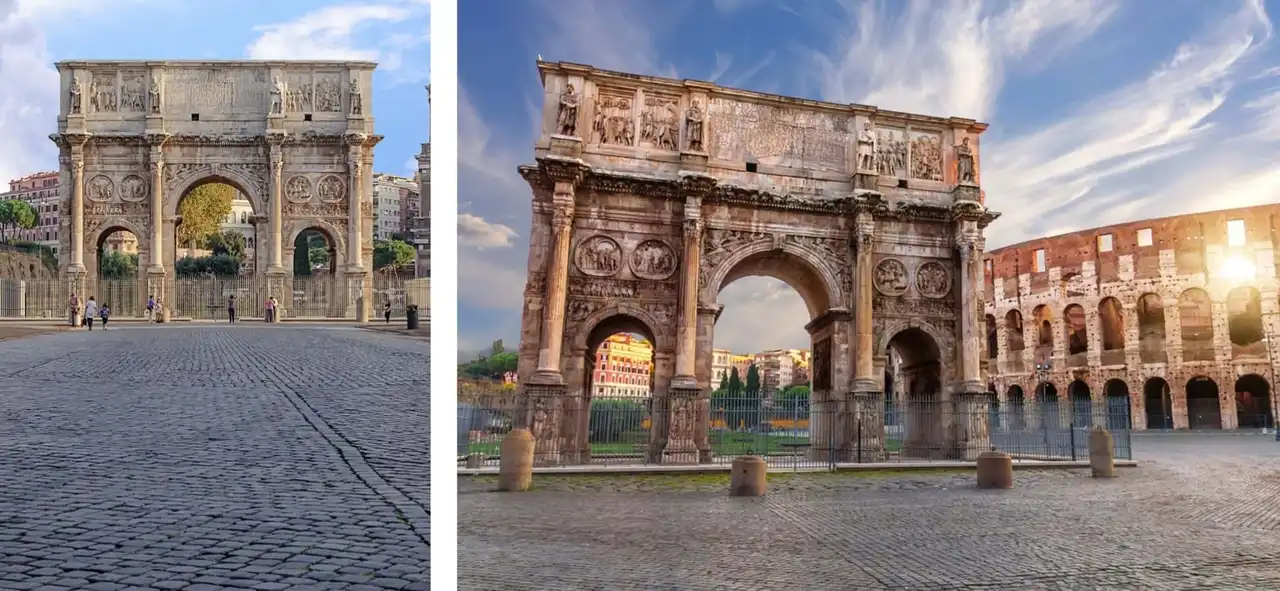
Arc Constantin, located next to the Colosseum of Rome - Photo credit: Shutterstock – Audrius Merfeldas & AlexAnton
Conservation condition: ★★★★★
Public knowledge: ★★★
Historical influence: ★
During your visit to the Colosseum of Rome, you will not be able to escape the view of the Arc Constantin. This arc of triumph was erected by the Roman Senate in 315 AD, in honor of Constantin , the Roman emperor having defeated Max. 312.
You can find triumphal arcs throughout your stay in Italy, since there are about twenty. Among the most famous and impressive, do not miss the one of Benevent, Janus or Titus.
For our rating system, we used the following criteria:
– State of conservation: based on its date of construction and renovations, in which state is currently located the site;
– Public knowledge: the notoriety of the archaeological site for non-initiates;
- Historical influence: the historical importance of the site and its influence on the following civilizations.
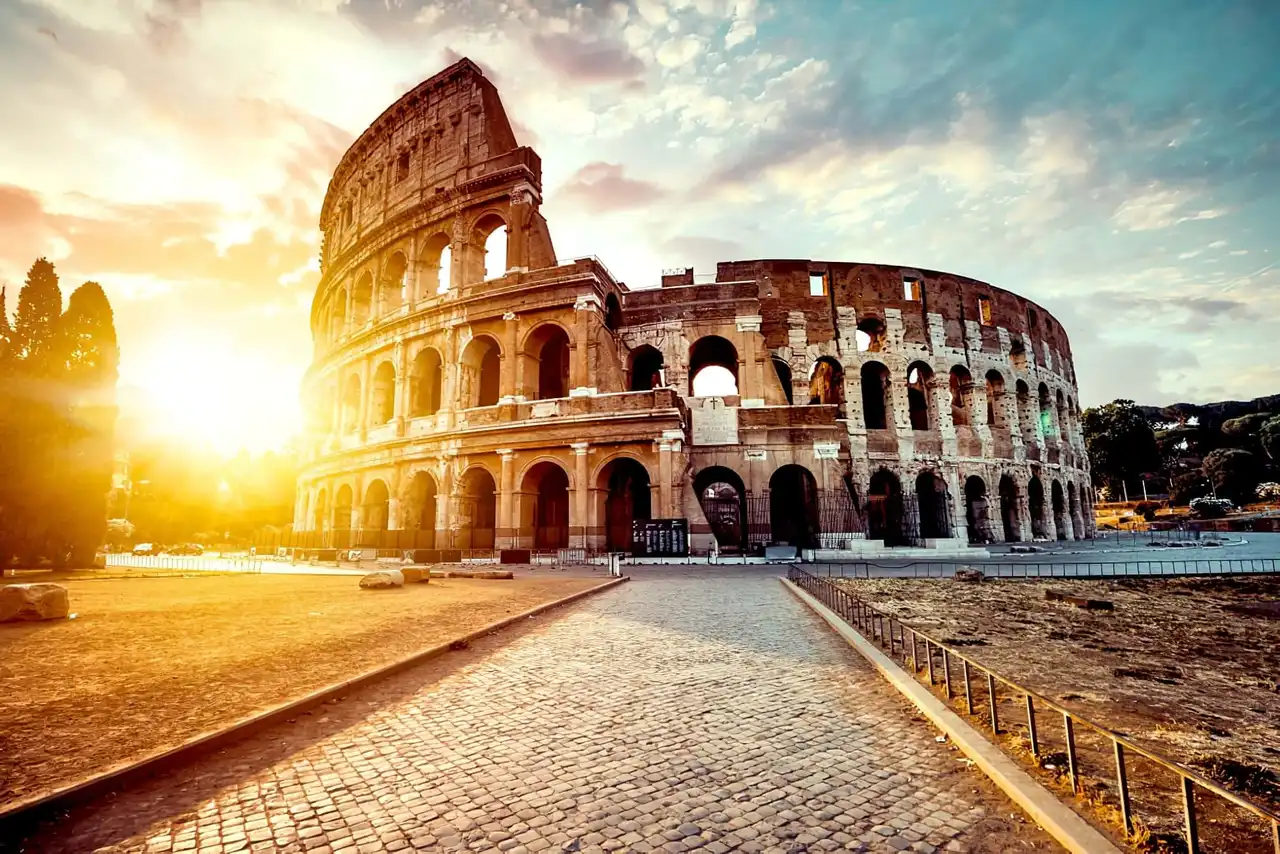





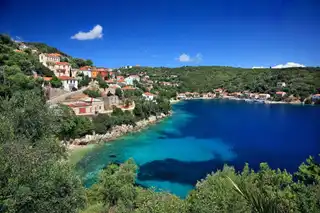

Loading comments ...